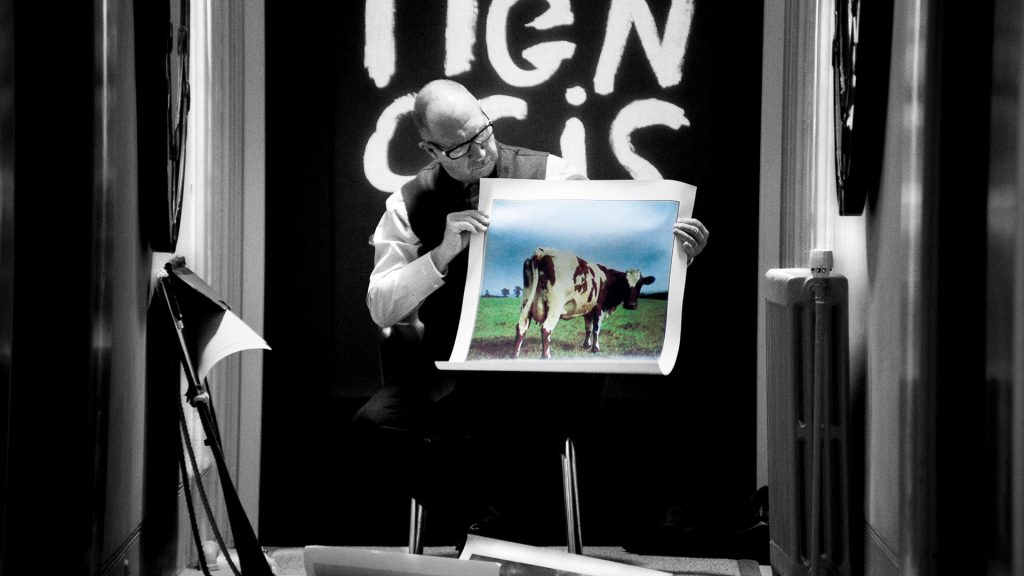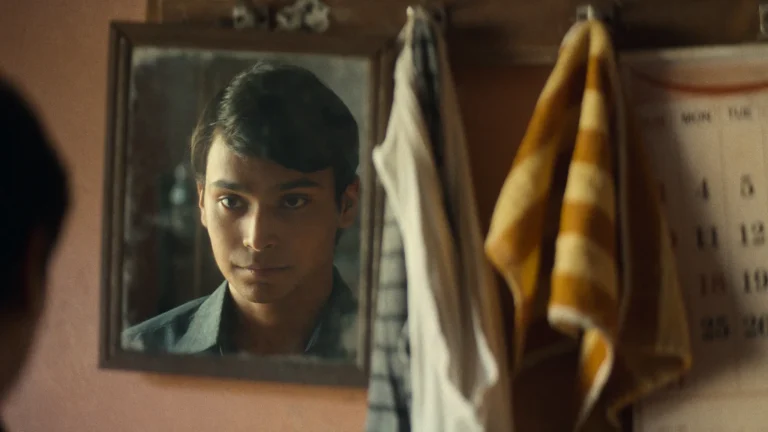Squaring the Circle (The Story of Hipgnosis, 2023) Documentary Review: In the first appearance of The Negative Zone (an otherworldly dimension) in Fantastic Four #51 (“This Man This Monster”), Jack Kirby draws the negative zone using photo references and collages of black-and-white images, splicing them together to show the “otherness” or otherworldly nature of said dimension.
In depicting the conceptual entity of Eternity, Steve Ditko would take a similar yet distinct approach in his Doctor Strange Run, particularly near the end (Strange Tales #138, #139). The resulting visual was a psychedelic spectacle, or at least the genesis of a psychedelic wonder written down and labeled as “cosmic.”
The two examples are brought up in the above paragraph primarily because these “cosmic” and “weird” depictions and images were part of the lexicon from the tail end of the 60s to the end of the 70s as album covers. The art of an album cover served the potent yet simple purpose of attracting customers.
If you listened to the interview of Aubrey Powell and Storm Thorgenson (Po and Storm, respectively), you would hear that they borrowed liberally from photographs, avant-garde art pieces, and even “Marvel Comics.” It does make sense that “Marvel” would be a key component in depicting the nonconformist approach of the art covers. Anton Corbijn’s documentary Squaring the Circle is an encyclopedic retelling of the rise and fall of Hipgnosis, the art design group that became the vanguard of album cover artwork for rock stars and musicians.
Unlike the album covers and their surrealist art design and quirky humor, Corbijn’s documentary feels far more traditional in its structure. The first 30 minutes introduce Powell via his testimony, with him recalling the first meeting between him, Storm, and Syd Barrett and describing the origin of their name as a pun for “hypnosis” while possessing a form of “impossible co-existence” as hip (meaning new or cool) and gnostic (related to ancient teachings) collide together and thus describe their company.
Corbijn also incorporates elements from Po and Storm’s relationship with Syd Barrett and the rest of Pink Floyd, who was arguably the face of progressive rock in the 1960s and 1970s, as well as becoming synonymous with distinctive album covers.
The distinction of such an album cover also became the cause of the resounding popularity of Hipgnosis. The design of the album cover for “Dark Side of the Moon” put Hipgnosis on the map, and as the testimonies of both Storm and Po attest, it brought in money, fame, and a plethora of excess.
The rest of the documentary moves via episodic chapter breaks, with white chalk tracing a record of a vinyl album, or the “circle,” which is then inserted into an album cover, or the “square.” Each episode or vignette describes the specificity or the idea that went into designing the album covers, and as the documentary progresses, you realize that both Po and Storm’s approach to the designs changes as well. Initially, they were crafted as simply being provocative or weird for the sake of attention and boosting sales, due to ideas presented via lateral thinking induced by a lot of LSD.
Later, it becomes more thought-provoking, more focused on the lyrics of the songs, and builds off an album cover based on the message of the songs. At times, it felt like the excess of that era contributed to their strong photography-oriented album covers. They used literal imagery to signify metaphorical aspects of the album, but the origin of that literal imagery became increasingly ridiculous and vastly expensive.

The album cover of “Wish You Were Here,” where one creative shakes the hand of another, the latter of whom is burning as flames lick his arms and his hair, is described by Po as a ludicrously risky affair where a stuntman was hired to play the role of “the burning band member” as a metaphor of the record business burning creatives down.
The cover of Led Zeppelin’s album Presence, where a family of four sits around a circular table looking at a black, twisty monolithic object, is inspired by the black monolith in Stanley Kubrick’s 2001: A Space Odyssey. It is just sprinkled with an added amount of creative fairy dust and innovative visual packaging techniques.
These vignette stories, interspersed with the testimonies of legends of rock music like Robert Plant, Roger Waters, and Dave Gilmour, ensure that fans of that era of music, as well as people who experienced the release of these albums in real-time, will be able to recognize these instances and moments and relish in the details.
Unlike Todd Haynes in “The Velvet Underground,” Corbijn doesn’t strive to evoke the era in his documentary itself. As a result, the formation of the ideas and the overarching work given to designing said ideas are depicted with an unpretentious and unassuming air, which works in the documentary’s favor.
However, it also becomes a niche subject to follow for over 100 minutes, and the documentary is self-aware enough about its chosen subject. As Noel Gallagher of Oasis and High Flying Birds attests in his testimonial, he managed to make his daughter understand album covers after telling her about the “small square cover in iTunes.” This represents a departure from the previous music industry, in which the more visually appealing the album cover, the higher the album sales.
Corbijn does not villainize or diminish either Po or Storm in the eventual breakup of Hipgnosis, but the documentary does meander. The aspects dealing with Syd Barrett and the relationship between Roger Waters and Storm deteriorating are interesting, but they ultimately feel like side strands not related to the main narrative. The subplot related to Peter Christopherson and his “dark attitude” feels out of place.
The documentary also commits the cardinal sin of rushing through the final moments in describing the breakup of Hipgnosis. While it did turn out to be one devoid of notoriety, the resulting break of over 12 years between Storm and Po deserved a far better depiction. “Wish You Were Here” playing in the background was an inspired score choice, though.
In the end, “Squaring the Circle” doesn’t entirely become a very accessible documentary for new viewers, but for rock and roll fans as well as fans of surrealist art and pop culture resulting from said art, this is catnip, especially with the amount of weird and humorous stories related to some of the album covers, which could become individual movies in their own right.
It could have been a longer, more exhaustive approach, but Corbijn wisely chooses not to overstay his welcome, ending with the final shot of Po carrying the album covers on his back and walking down the forest-adorned street, which could have been an album cover all of its own. Perhaps not a Hipgnosis one or even a Peter Saville one, but poignancy still has its place amidst surrealism.
Editors note: This review was initially published during the film’s Sundance premiere. Squaring the Circle (The Story of Hipgnosis) is now available on Video on Demand.





![In Action [2021] Review – Bickering, self-reflective film is unbearably amateurish](https://79468c92.delivery.rocketcdn.me/wp-content/uploads/2021/05/In-Action-1-highonfilms-768x321.jpg)



